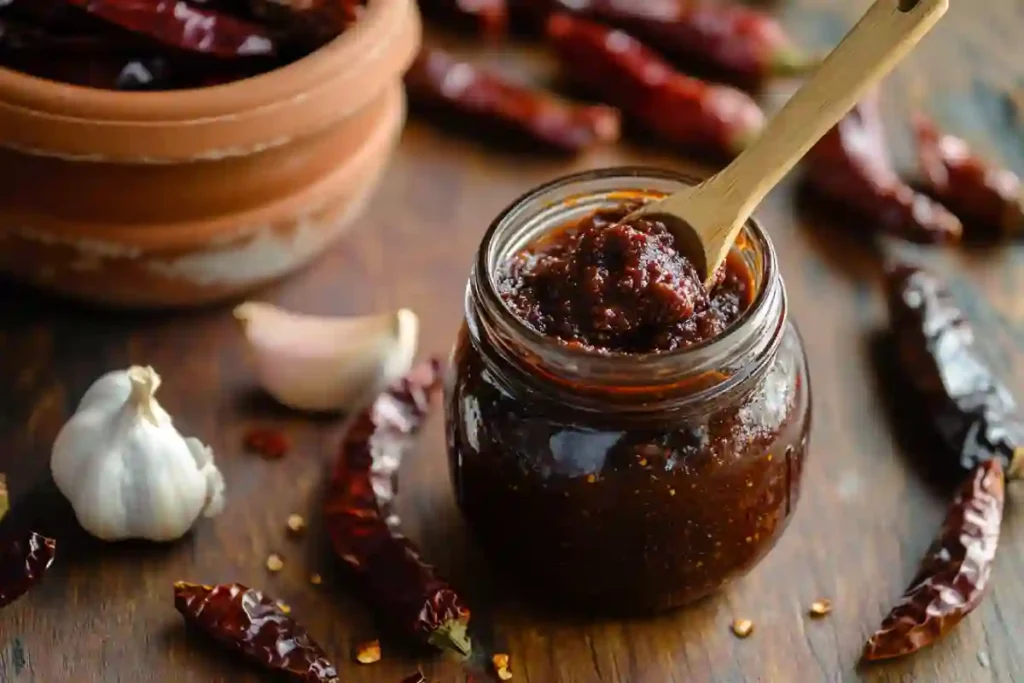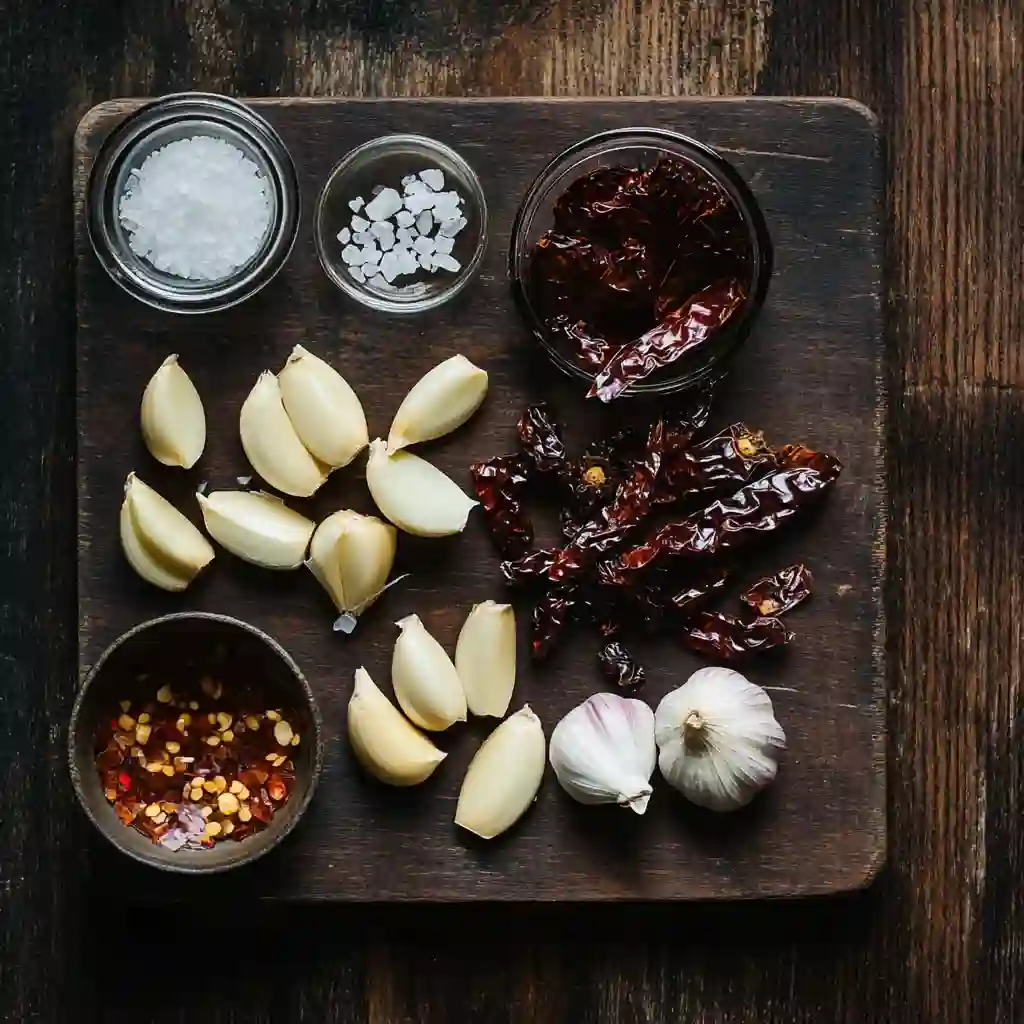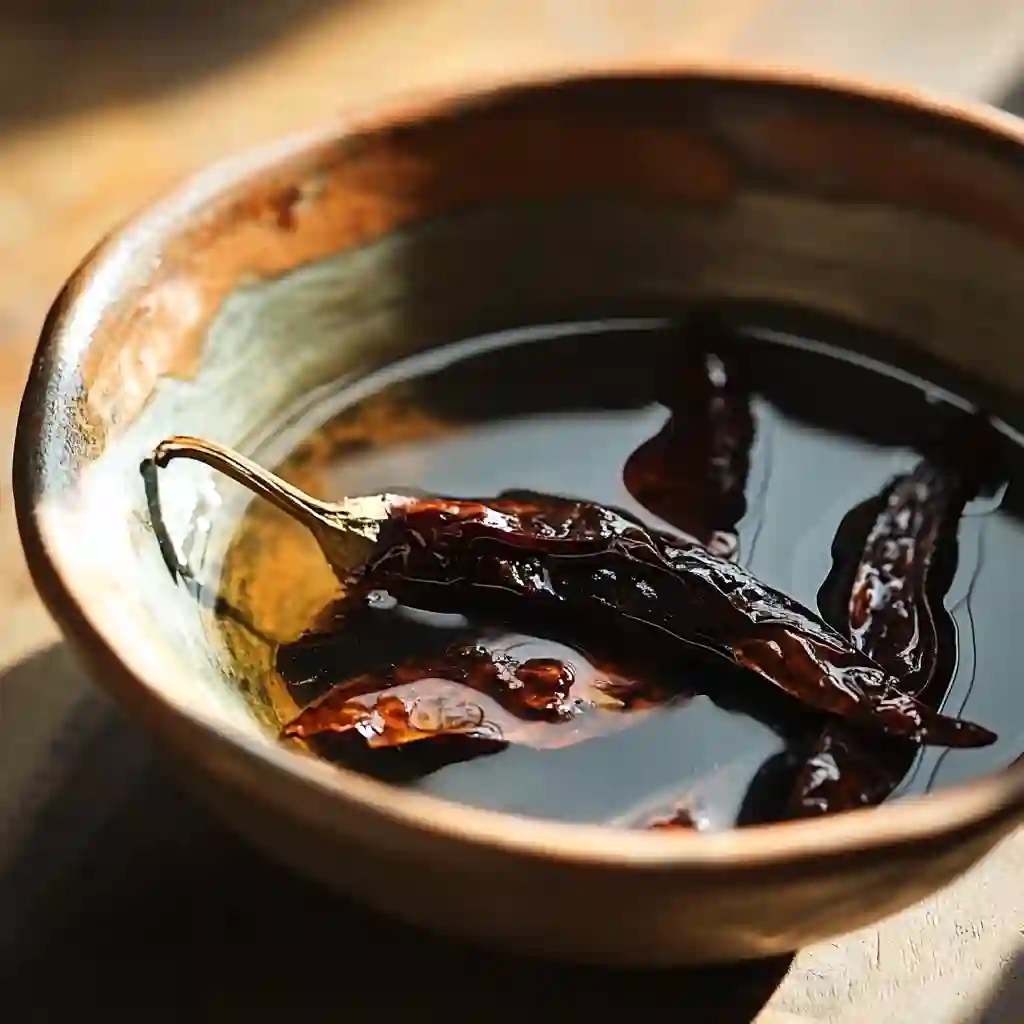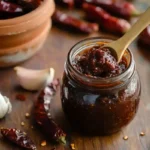
Table of Contents
If you’ve ever cooked with dried chilies, you know there’s a kind of magic to unlocking their flavor. Ancho chili paste is one of those pantry staples that took me by surprise. The first time I made it, I was standing in my Portland kitchen with a basket of dried anchos I’d bought out of curiosity, not expectation. I didn’t know it yet, but that slow simmer and earthy aroma would become the heart of one of my favorite sauces—rich, smoky, sweet, and undeniably comforting.
I remember using it first in a twist on enchiladas. I blended the softened chiles with garlic, cumin, and a splash of cider vinegar. What came out of the blender wasn’t just sauce—it was depth, nostalgia, and something that felt like it belonged in every warm, savory dish I craved on rainy Pacific Northwest nights. Since then, ancho chili paste has found its way into my stews, marinades, and even tofu rubs. It’s the kind of ingredient that teaches you how less can be more—just a spoonful can transform the entire direction of a dish.
In this article, we’ll explore exactly what ancho chili paste is, what makes it special, how to use it in plant-based cooking, and even how to swap it when you’re in a pinch. Whether you’re already in love with chiles or just ancho-curious, you’ll find inspiration, recipes, and kitchen confidence here.
The Story Behind Ancho Chili Paste
A favorite flavor that started by accident
Ancho chili paste wasn’t part of my culinary toolkit until a rainy Portland Sunday pushed me into experimenting with dried chilies. I had picked up a few ancho chilies on a whim—more out of curiosity than intent. They sat in my pantry for weeks until I finally soaked and blended them with garlic, cumin, and a splash of broth. What came out wasn’t just sauce; it was a revelation.
The deep, smoky sweetness of the ancho chili paste reminded me of the slow-cooked flavors from my childhood in Northern California—dishes that simmered all afternoon while the whole house filled with warm spice. I used that first batch in a lentil stew, and it changed everything. I’ve been hooked ever since.
Today, I keep a jar in my fridge at all times. A spoonful stirred into black beans, brushed over roasted carrots, or swirled into broth adds a subtle complexity that makes plant-based meals feel complete. It’s not just another spice blend—it’s a true kitchen essential.
The roots and relevance of ancho chili paste
Ancho chili paste comes from dried poblano peppers, traditionally sun-dried and blended into a thick, smooth paste. Unlike raw chiles, these anchos carry a soft heat with notes of raisin, coffee, and cocoa—making the paste ideal for both classic and creative recipes. It’s the soul of many Mexican sauces, like adobo and mole, and is used to build flavor in tamales, pozoles, and hearty bean dishes.
This paste has found a powerful place in plant-based cooking because of its natural umami and deep base flavor. Whether you’re making vegan tacos, chili, or even a smoky plant-based barbecue glaze, ancho chili paste becomes the kind of ingredient you reach for instinctively.
If you’re curious about crafting your own or want to experiment with bold flavors, I recommend exploring this ancho chili substitute guide, which dives into the best swaps when anchos are hard to find. And if you’re looking to expand your pantry even further, consider pairing anchos with other rich, dark peppers like in this pasilla pepper salsa recipe. They work beautifully together and deepen any savory base.
Making Ancho Chili Paste at Home
Simple ingredients with powerful depth
What makes ancho chili paste special isn’t just its flavor—it’s how easy it is to make from scratch. You don’t need fancy equipment or rare ingredients. You need time, a good blender, and a bit of patience. The foundation is dried ancho chilies, which are rich, slightly smoky, and low in heat. You’ll round that out with garlic, a touch of acid, and just enough liquid to help it blend smooth.

Below are the basic ingredients I use regularly for a small batch of deeply flavorful ancho chili paste:
| Ingredient | Amount |
|---|---|
| Dried ancho chilies | 4 medium (about 2 oz) |
| Garlic cloves | 2, peeled |
| Apple cider vinegar | 1 tablespoon |
| Warm water or broth | ½ cup (plus more as needed) |
| Sea salt | ½ teaspoon |
Step-by-step process for ancho chili paste

- Prep the chilies
Discard the stems and seeds from the dried ancho chilies. Toast them lightly in a dry skillet over medium heat for about 30 seconds per side. This deepens their flavor and brings out hidden smoky notes. - Soak until soft
Place the toasted chilies in a bowl and cover with hot water. Let them soak for about 20–25 minutes, until fully softened. Drain, but reserve some of the soaking water to blend if needed. - Blend to perfection
In a blender or food processor, combine the softened chilies, garlic, apple cider vinegar, salt, and warm water or broth. Blend until fully smooth, scraping down the sides as necessary. If the mixture is too thick, gradually add water, one tablespoon at a time. - Store for later use
Spoon the finished ancho chili paste into a clean jar. Store in the refrigerator for up to one week, or freeze in small portions for longer storage.
Creative Ways to Use Ancho Chili Paste
Everyday uses for ancho chili paste
Once you’ve made a jar of ancho chili paste, the next step is learning where it shines—and the answer is just about everywhere. Whether in soups or over grilled vegetables, this versatile paste enhances flavor with depth while letting your ingredients shine. It’s the kind of base that enhances rather than dominates, which is why it’s a go-to in my kitchen.
Use it as a marinade, stir it into sauces, or swirl it into dips to give your dishes a smoky backbone. Below is a practical guide to how much to use and where:
| Dish Type | How to Use Ancho Chili Paste |
|---|---|
| Soup or Stew | Add 1–2 tablespoons during simmering for smoky depth |
| Tacos & Tostadas | Mix with lime and olive oil for a quick drizzle or spread |
| Grilled Veggies | Brush on before grilling or roasting for a bold glaze |
| Beans or Lentils | Stir in 1 tsp per serving for complex umami flavor |
| Dips & Dressings | Blend with cashews or tahini for smoky creaminess |
Best pairings and recipe ideas
Ancho chili paste isn’t just for “Mexican night.” It’s a bridge between sweet, smoky, and savory flavors—perfect for any cuisine that benefits from richness and warmth. It’s especially effective in meals that are missing umami (which is often the case in vegan cooking).
Here are a few plant-powered ways to bring it to life:
- Mix with tamari and maple syrup for a smoky-sweet BBQ sauce
- Whisk into vegan sour cream for a smoky taco topper
- Add to carrot pasilla pepper soup for a bolder base
- Combine with tahini and lemon for a savory grain bowl drizzle
- Incorporate into enchilada stuffing, paired with beans and rice for a rich, flavorful filling.
- Try it in pasilla pepper sauce recipe as a blend for complex chili sauces
If you’re ever unsure about how much to use, start with a teaspoon. Ancho chili paste is mild, but its flavor carries. Taste, stir, and adjust—that’s the joy of real cooking.
Variations and Comparisons in the World of Ancho
Understanding the difference: ancho vs. guajillo
Ancho and guajillo peppers are often mentioned in the same breath—and for good reason. Both are essential ingredients in Mexican cuisine, serving as the foundation for numerous traditional sauces. But when it comes to making or substituting ancho chili paste, it’s important to understand how they differ in flavor, heat, and usage.
Here’s a quick comparison to help you confidently substitute or combine:
| Characteristic | Ancho Chili | Guajillo Chili |
|---|---|---|
| Color | Dark reddish-brown | Deep red |
| Flavor | Smoky, sweet, raisin-like | Tangy, bright, berry-like |
| Heat Level | Mild (1,000–2,000 SHU) | Mild to medium (2,500–5,000 SHU) |
When you want smokiness and body, ancho is the right choice. But if you’re after a touch of acidity and brightness, blending in a guajillo can lift the overall flavor. The good news? They play well together in the same paste.
When to substitute ancho chili paste
Sometimes you can’t find dried anchos—or you’ve simply run out of your homemade paste. No worries. There are flavorful alternatives that can carry a similar tone in your dish. Here are a few options:
- Pasilla chili paste: Slightly earthier, perfect in moles and rich sauces
- Guajillo paste: Brighter, with a touch more heat—best in red enchilada sauce
- Chipotle in adobo: Smokier and spicier; use in moderation
- Smoked paprika + tomato paste: A pantry-friendly emergency blend
- Dark miso + chili flakes: For umami-rich heat in vegan broths or ramen
For a more comprehensive guide on substitutions, check out this helpful external reference from Chili Pepper Madness—it breaks down flavor profiles and pairing tips without competing with recipe content.
FAQs About Ancho Chili Paste
What is ancho chili paste?
Ancho chili paste is a thick, flavorful blend made from rehydrated dried poblano peppers, commonly known as anchos. It’s mildly spicy with deep, smoky-sweet undertones and is used to enhance stews, sauces, marinades, and more.
Is ancho chili paste hot?
Not really. Ancho chili paste is known for its mild heat—generally between 1,000 and 2,000 Scoville Heat Units (SHU). It’s more about flavor than fire, making it ideal for those who prefer gentle spice with rich complexity.
How to use ancho paste?
Use it as a base in soups, sauces, or marinades. Stir it into beans, whisk it into dressings, or brush it over roasted vegetables. It’s especially useful for deepening the flavor of vegan and vegetarian dishes.
Are guajillo and ancho the same?
No, but they are often used together. Guajillo chilies are brighter and slightly hotter than anchos, which are richer and more mellow. Combining them adds complexity to sauces like mole or adobo.
Conclusion
Ancho chili paste isn’t just another condiment—it’s a foundation ingredient that brings warmth, richness, and versatility to plant-based cooking. Whether you’re blending your own or buying it premade, keeping a jar on hand opens the door to dozens of flavorful, satisfying dishes.
Its mild heat and smoky sweetness make it incredibly adaptable—especially when paired with ingredients like garlic, tamari, or citrus. Try it in your next grain bowl, soup base, or enchilada filling and you’ll see just how powerful this simple paste can be.
Print
Ancho chili paste
- Total Time: 20 minutes
- Yield: 1 cup 1x
- Diet: Vegan
Description
Smoky, mildly sweet ancho chili paste made from dried poblanos, perfect for marinades, soups, and sauces.
Ingredients
4 dried ancho chilies
2 garlic cloves, peeled
1 tbsp apple cider vinegar
1/2 cup warm water or broth
1/2 tsp sea salt
Instructions
1. Remove stems and seeds from the chilies.
2. Toast them lightly in a dry pan for 30 seconds per side.
3. Soak chilies in hot water for 20 minutes.
4. Drain and blend with garlic, vinegar, salt, and water.
5. Blend until smooth, adjusting liquid as needed.
6. Store in an airtight jar for up to 1 week.
Notes
Add a pasilla chili or tomato for variation.
Freeze in silicone trays for long-term use.
- Prep Time: 10 minutes
- Cook Time: 10 minutes
- Category: Condiments
- Method: Blending
- Cuisine: Mexican
Nutrition
- Serving Size: 1 tbsp
- Calories: 20
- Sugar: 0g
- Sodium: 100mg
- Fat: 0g
- Saturated Fat: 0g
- Unsaturated Fat: 0g
- Trans Fat: 0g
- Carbohydrates: 4g
- Fiber: 1g
- Protein: 0.5g
- Cholesterol: 0mg
Keywords: ancho chili paste, vegan chili paste, chili marinade, smoky sauce
